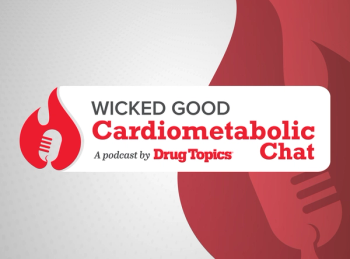
Researchers Investigating Two Novel Diabetes Treatments
In the early stages of development, researchers find 2 treatments are efficacious for diabetes.
Two new diabetes treatments could be on the way, after early research shows effectiveness.
A team of researchers from Helmholtz Munich, the German Center for Diabetes Research (DZD) and Novo Nordisk have developed a new hormone combination for the future treatment of type 2 diabetes (T2D).
They combined the blood sugar-reducing effects of the drugs tesaglitazar and GLP-1 (Glucagon-like peptide-1) in a “new and highly effective drug” that has been tested successfully in animal studies, according to a DZD press release.1 The study on the drug candidate was published in Nature Metabolism.2
By combining tesaglitazar with GLP-1, the tesaglitazar only enters tissue that contains GLP-1 receptors, DZD said. “This reduces the adverse effects of tesaglitazar while increasing the effects on sugar metabolism.”
“The sugar metabolism of obese and diabetic male mice improved to a far greater extent compared with treatment using only the GLP-1 hormone or tesaglitazar alone — and with no damaging adverse effects to the liver or kidney,” said Kerstin Stemmer, one of the lead authors of the study and professor and group leader at Helmholtz Munich’s Institute for Diabetes and Obesity.
“This drug has great potential for the acute treatment of elevated blood sugar levels associated with type 2 diabetes,” added Aaron Novikoff, PhD, another lead author of the study and a PhD student at Helmholz Munich.
Next, the researchers want to investigate whether the drug candidate also has the potential to treat humans with T2D and whether the efficacy of the new combination therapy can be optimized further using biochemical modifications.
Separately, a team of University of British Columbia (UBC) researchers working on developing oral insulin tablets as a replacement for daily insulin injections discovered that insulin from the latest version of their oral tablets is absorbed by rats in the same way that injected insulin is.
“These exciting results show that we are on the right track in developing an insulin formulation that will no longer need to be injected before every meal, improving the quality of life, as well as mental health, of more than 9 million type 1 diabetics around the world,” said professor Dr. Anubhav Pratap-Singh, the principal investigator from the faculty of land and food systems at UBC, in a news release.3
The UBC researchers are seeing nearly 100% of the insulin from the tablets go straight into the liver, according to Dr. Alberto Baldelli, a senior fellow in Dr. Pratap-Singh’s lab. In previous attempts to develop a drinkable insulin, most of the insulin would accumulate in the stomach.
Pratap-Singh’s team developed a tablet that isn’t made for swallowing, but instead dissolves when placed between the gum and cheek. This method makes use of the thin membrane found within the lining of the inner cheek and back of the lips, according to UBC.
References
- New drug candidate developed to treat type 2 diabetes. News release. German Center for Diabetes Research. August 26, 2022. Accessed September 8, 2022.
https://www.eurekalert.org/news-releases/963030 . - Quarta C, Stemmer K, Novikoff A, et al. GLP-1-mediated delivery of tesaglitazar improves obesity and glucose metabolism in male mice. Nat Metab. 2022 Aug;4(8):1071-1083. doi: 10.1038/s42255-022-00617-6.
- UBC team developing oral insulin tablet sees breakthrough results. New release. University of British Columbia. August 30, 2022. Accessed September 8, 2022.
https://www.eurekalert.org/news-releases/963235 . - Guo Y, Baldelli A, Singh A, Fathordoobady F, Kitts D, Pratap-Singh A. Production of high loading insulin nanoparticles suitable for oral delivery by spray drying and freeze drying techniques. Sci Rep. 2022 Jun 15;12(1):9949. doi: 10.1038/s41598-022-13092-6.
Newsletter
Pharmacy practice is always changing. Stay ahead of the curve with the Drug Topics newsletter and get the latest drug information, industry trends, and patient care tips.





























































































































